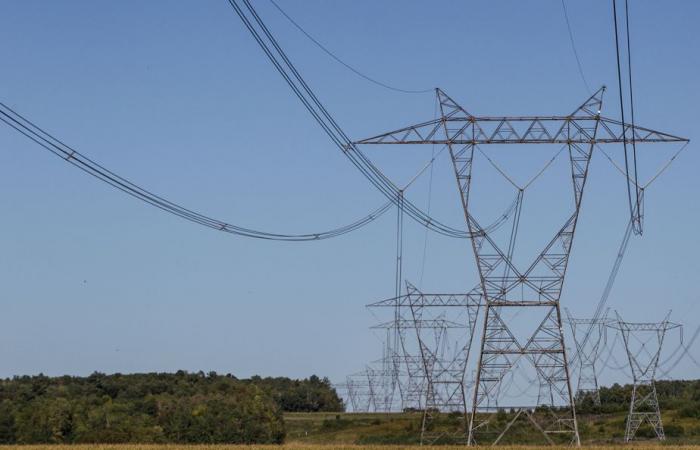While Canada and Quebec need electricity more than ever, they have never produced so little. Total electricity production in the country last year reached its lowest level since records began, despite the addition of new production facilities.
Posted at 2:30 a.m.
Updated at 6:00 a.m.
Almost all of this drop in production is due to weather conditions, explains Statistics Canada in a recent study. Approximately 60% of the electricity produced in Canada is hydroelectricity, the performance of which is directly linked to weather conditions.
The decline in electricity production in Canada is explained by the drought which affected the three main hydroelectricity producing provinces. Quebec produced 9.3% less electricity in 2023 than in 2022, which dug a $1 billion hole in the finances of Hydro-Québec and those of its government shareholder. British Columbia was hit even harder, with a 21.5% drop in hydroelectric production; that of Manitoba fell by 12.1%.
A new reality
The modern world is increasingly dependent on electricity, notes François Bouffard, energy specialist and professor at McGill University. “Quebec is already very much so, but others are becoming more and more so, like New York State. »
Due to the conversion of heat to electricity and the electrification of cars, New York State recently released forecasts that point to a dramatic increase in its electricity needs in the winter.
For Hydro-Québec, which has always been able to count on the energy available from its neighbors for consumption peaks in winter, this is not good news, believes François Bouffard.
Canada is a net exporter of electricity to the United States – at least it was until now. In January and February of this year, the United States exported more electricity to Canada for the first time in eight years, according to Statistics Canada. British Columbia imported the largest volume of American electricity.
Read “Canada Imports More American Energy”
Quebec has been overtaken by Ontario as the largest exporter of electricity to the United States.
The long-term impact of climate change on hydroelectricity production remains the great unknown. The professor points out that Ouranos experts, on whom Hydro-Québec relies, predict an increase in water supplies in northern Quebec, where the large reservoirs are located.
“We are currently in a cycle of drought and we can think that over time, balance will return,” says François Bouffard. He recalls that as recently as 2017 and 2018, Hydro-Québec had too much water in its northern reservoirs, and it had to release enormous quantities of it to no avail.
Solutions to consider
Since no one knows the future, solutions must be found to ensure that we do not run out of electricity. “The new reality means that we can certainly be concerned about the resilience of our electricity supplies,” according to François Bouffard.
Solutions exist, according to him, provided we have the wisdom to think about energy wealth on a continental rather than regional scale.
We need more transmission lines between Canada and the United States, more large-scale storage and more facilities like pumped storage plants that store water and turn it into electricity when the needs are higher.
Each of these solutions has advantages and disadvantages. Transmission lines, like the two currently being built by Hydro-Québec to Boston and New York, will be used to direct electricity in one direction, from north to south, for at least 20 years, or the duration of the contracts. he emphasizes.
Large-scale storage is still a very expensive solution, while pumped storage power plants are only possible in certain specific geographic sites, of which there are few.
François Bouffard, however, believes that the ingredient that may be missing is political will. Giving up control of energy to a transnational agency, for example, “is an impossible political pill to swallow,” he says.
Learn more
-
- 615.3 million megawatt hours
- Total electricity production in Canada in 2023, down 3.4% from 2022
source: Statistics Canada






